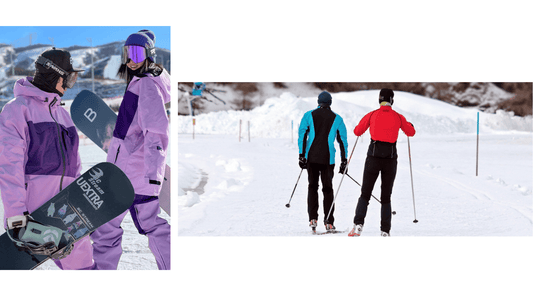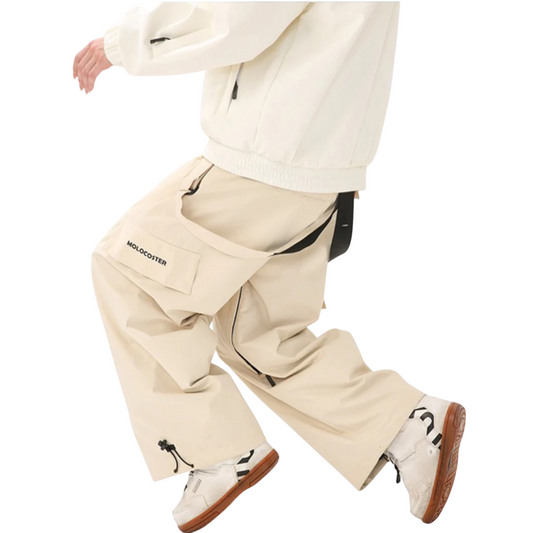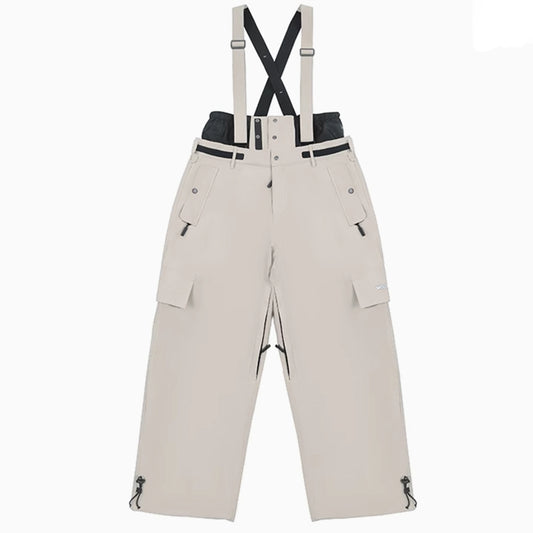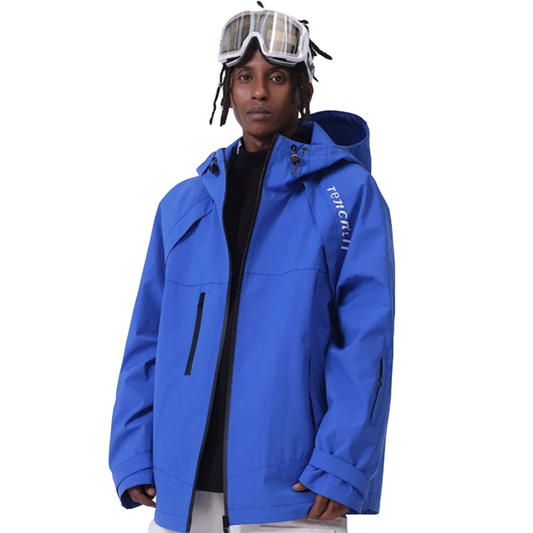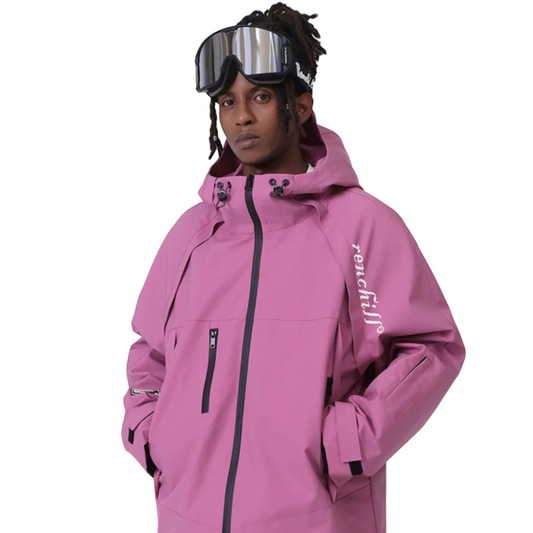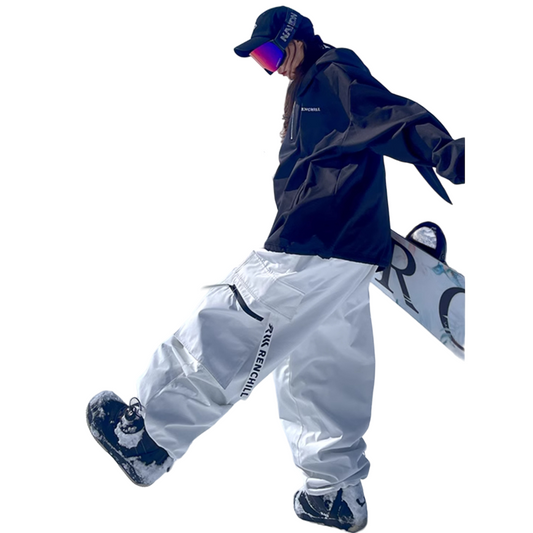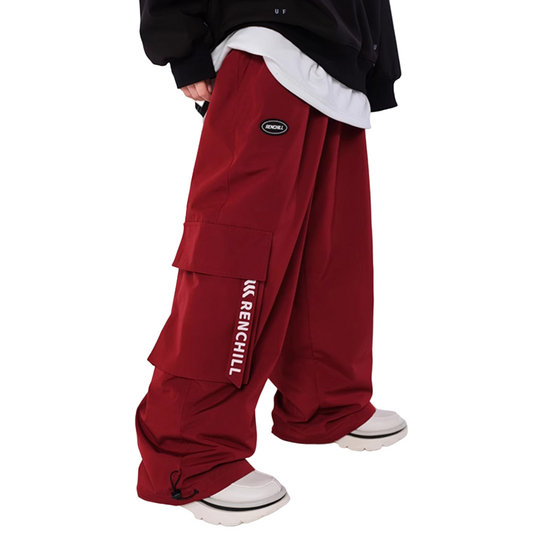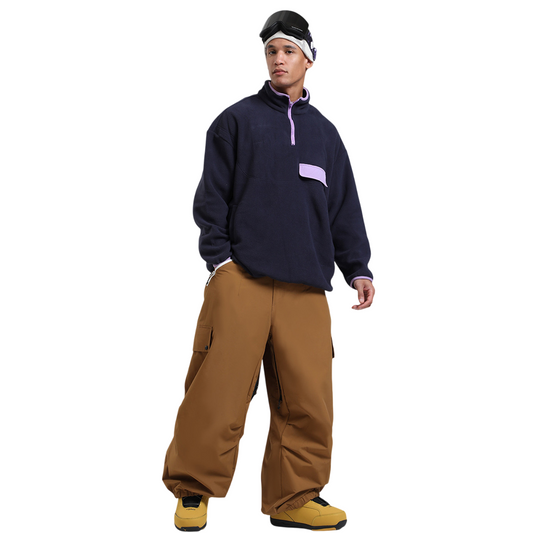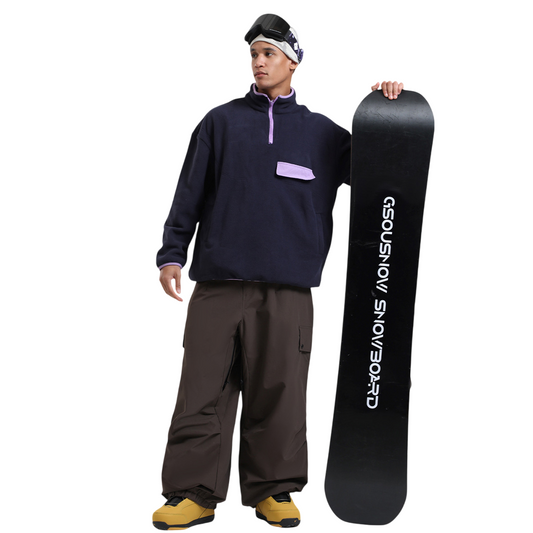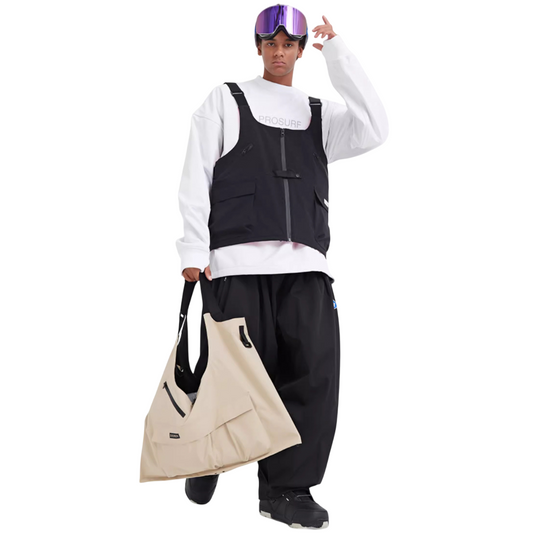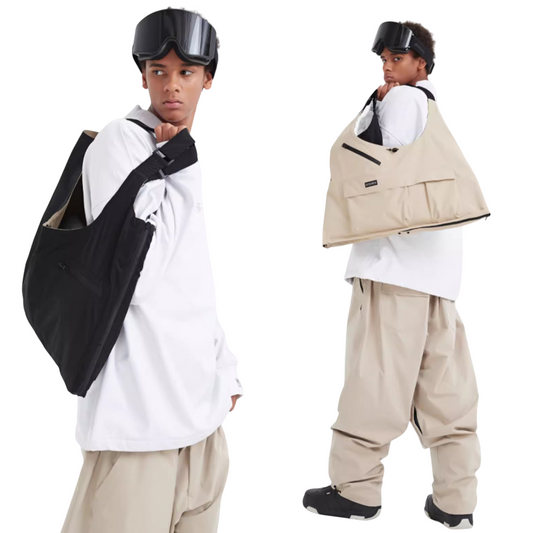Your choice of layers for what to wear under ski bibs depends on their insulation. Insulated pants provide warmth for frigid conditions, while uninsulated ones allow for better temperature control during active skiing. Selecting the right layers is vital for comfort and performance. For example, insulated bibs are ideal for colder days, while shell bibs excel in high-energy activities.
Key Takeaways
- Pick insulated ski pants for very cold days. They keep you warm and comfy without extra clothes.
- Use non-insulated ski pants in warmer weather. You can add layers for better airflow and movement.
- Wear thin, sweat-wicking base layers under insulated pants. This keeps you cool and dry while skiing.
Insulated Ski Pants: What You Need to Know
What Are Insulated Ski Pants?
Insulated ski pants are designed to keep you warm during cold-weather activities. They feature built-in insulation, which eliminates the need for excessive layering. These pants often use advanced materials like synthetic PrimaLoft or down insulation to trap heat effectively. Many insulated ski pants also include waterproof and breathable fabrics, such as Gore-Tex, to protect you from snow and moisture while allowing sweat to escape. With insulation weights typically ranging from 150 to 200 g/m², they provide the perfect balance of warmth and mobility.
Benefits of Insulated Ski Pants
Wearing insulated ski pants offers several advantages. First, they provide consistent warmth, even in freezing temperatures or at high altitudes. The built-in insulation ensures you stay comfortable without needing multiple layers, which can restrict movement. Additionally, these pants often include features like snow-proof cuffs and waterproofing to shield you from harsh weather. Their breathability helps regulate your body temperature, preventing discomfort caused by perspiration. Whether you're skiing or snowboarding, insulated ski pants enhance your overall experience by keeping you warm and dry.
When to Choose Insulated Ski Pants for Skiing
You should choose insulated ski pants when skiing in extremely cold weather or at higher elevations where temperatures drop significantly. They are ideal for skiers who prioritize warmth and comfort over layering flexibility. If you prefer a streamlined outfit that minimizes bulk, insulated ski pants are an excellent choice. They also work well for beginners who may not have specialized base layers. For example, pants like the Helly Hansen Legendary Insulated or Arc'teryx Sabre provide warmth and versatility, making them suitable for various skiing conditions.
Non-Insulated Ski Pants: A Versatile Choice
What Are Non-Insulated Ski Pants?
Non-insulated ski pants, often called shell pants, are designed without built-in insulation. These pants focus on providing protection from external elements like wind and snow while allowing you to customize your layers underneath. Their lightweight construction makes them ideal for warmer skiing conditions or high-energy activities. For example, spring skiing in places like California often calls for non-insulated options due to the milder temperatures.
Key characteristics of non-insulated ski pants include:
- Enhanced breathability for better temperature regulation.
- Lightweight materials that prioritize freedom of movement.
- Versatility for layering based on weather conditions.
Advantages of Non-Insulated Ski Pants
Non-insulated ski pants offer several benefits that make them a popular choice among skiers. Their versatility allows you to adapt your layers to changing weather, ensuring comfort throughout the day. These pants are generally lighter, providing greater mobility and reducing fatigue during active skiing sessions. Additionally, their breathable design prevents overheating, especially during high-energy activities.
|
Feature |
Insulated Ski Pants |
Non-Insulated Ski Pants |
|---|---|---|
|
Weather Suitability |
Better for colder weather and wet conditions |
More versatile for varying temperatures |
|
Mobility and Comfort |
May be bulkier, but warmer |
Generally lighter and more breathable |
|
Breathability |
Less breathable due to insulation |
More breathable, allowing for layering |
|
Cost |
Typically more expensive due to materials |
Usually less expensive and versatile |
Best Conditions for Wearing Non-Insulated Ski Pants
Non-insulated ski pants shine in moderate or warmer weather conditions. They are perfect for spring skiing or regions with milder winters. If you plan to engage in high-energy activities like mogul skiing or backcountry exploration, these pants provide the breathability and freedom of movement you need. Their adaptability also makes them suitable for unpredictable weather, as you can easily adjust your layers to stay comfortable.
What to Wear Under Insulated Ski Pants
Lightweight Base Layers for Insulated Pants
Wearing lightweight base layers under insulated ski pants is essential for maintaining comfort and performance on the slopes. These layers act as your first line of defense against cold temperatures, helping regulate body heat while managing moisture. Since insulated ski pants already provide built-in insulation, you don’t need bulky layers underneath. Instead, opt for thin, moisture-wicking base layers that keep sweat away from your skin and prevent dampness.
Base layers made from materials like merino wool or synthetic fabrics are ideal for this purpose. They offer excellent breathability and temperature regulation, ensuring you stay warm without overheating. Thermal underwear, often referred to as long johns, is a popular choice for skiers. It provides effective insulation while allowing freedom of movement.
Tip: Choose base layers with flat seams to avoid chafing during long hours of skiing.
Materials to Consider: Merino Wool vs. Synthetic Fabrics
Selecting the right material for your base layer can significantly impact your skiing experience. Merino wool and synthetic fabrics are two common options, each with distinct advantages.
-
Merino Wool:
-
Provides superior warmth, even when wet.
-
Naturally resists odors, making it ideal for multi-day ski trips.
-
Feels soft and comfortable against the skin.
-
Absorbs moisture but dries slowly.
-
-
Synthetic Fabrics:
-
Dry quickly and wick moisture efficiently.
-
Offer better durability and resistance to wear and tear.
-
Tend to breathe slightly better, reducing the risk of overheating.
-
Retain odors, which may require frequent washing.
-
If you prioritize warmth and comfort, merino wool is an excellent choice. For high-energy activities or unpredictable weather, synthetic fabrics provide better breathability and durability.
Note: While merino wool is more expensive, its natural insulating properties and odor resistance make it a worthwhile investment for serious skiers.
Avoiding Overheating with Insulated Ski Pants
Overheating can be a common issue when wearing insulated ski pants, especially during intense activities. To prevent this, focus on layering strategically. Lightweight base layers with moisture-wicking properties help regulate body temperature by drawing sweat away from your skin. Breathable fabrics allow heat and moisture to escape, keeping you dry and comfortable.
Avoid adding insulating mid-layers unless the weather is extremely cold. Insulated ski pants already provide sufficient warmth through their built-in insulation. Adding too many layers can trap heat, leading to discomfort and excessive sweating.
Tip: Adjust your layering based on the day’s temperature and your activity level. For warmer conditions, consider wearing thinner base layers or opting for non-insulated pants instead.
What to Wear Under Non-Insulated Ski Pants
Layering Essentials: Base and Mid-Layers
When wearing non-insulated ski pants, layering becomes essential for maintaining warmth and comfort. These pants lack built-in insulation, so you need to create a customized layering system to stay protected in cold weather. Start with a high-quality base layer that wicks moisture away from your skin. Lightweight merino wool or synthetic fabrics work best for this purpose. They regulate your body temperature while keeping you dry, even during intense activities.
For colder days, add a mid-layer to enhance warmth. A fleece or wool sweater provides excellent insulation without restricting mobility. Fleece, made from synthetic polyester, offers breathability and comfort, making it a popular choice. Merino wool, on the other hand, provides superior warmth and odor resistance, even when wet. Combining these layers ensures you stay warm while maintaining freedom of movement on the slopes.
Tip: Avoid cotton layers. Cotton absorbs moisture and dries slowly, which can leave you feeling cold and uncomfortable.
Choosing the Right Materials for Non-Insulated Pants
The materials you choose for your base and mid-layers play a critical role in your overall comfort and performance. Non-insulated ski pants are typically waterproof and windproof, so pairing them with breathable and insulating layers is key. Here’s a breakdown of materials to consider:
-
Base Layer:
-
Merino wool: Provides warmth, moisture management, and odor resistance.
-
Synthetic fabrics: Lightweight, quick-drying, and durable.
-
-
Mid-Layer:
-
Fleece: Offers breathability and comfort, ideal for active skiing.
-
Synthetic insulation: Mimics down’s warmth-to-weight ratio and retains heat when wet.
-
Investing in high-quality materials ensures your layering system performs well in varying conditions. For example, Gore-Tex shell pants paired with fleece tights provide excellent breathability and wind resistance. This combination keeps you warm and dry while allowing for easy movement.
Note: High-quality materials like Gore-Tex may cost more upfront but offer long-term durability and performance, making them a worthwhile investment.
Adapting Layers for Changing Weather Conditions
Weather conditions on the slopes can change rapidly, so your layering strategy should be adaptable. Begin your day with all layers in place, including a base layer, mid-layer, and your non-insulated ski pants. Evaluate your comfort level every 30 minutes. If you start to feel warm, remove the mid-layer before sweating begins. This prevents moisture buildup, which can lead to discomfort later.
In colder conditions, consider adding a thicker mid-layer or wearing thermal tights under your base layer. For warmer afternoons, increase ventilation by loosening zippers or removing layers. Non-insulated ski pants provide the flexibility to adjust your clothing based on temperature changes, ensuring you stay comfortable throughout the day.
Pro Tip: Always carry an extra mid-layer in your backpack. This allows you to add warmth if the weather turns colder unexpectedly.
By mastering the art of layering, you can enjoy the benefits of non-insulated ski pants in any weather. Their versatility, combined with the right materials and layering techniques, ensures you stay warm, dry, and comfortable on the slopes.
Why Choose SNOWMOCACA Ski Bibs?
Features of SNOWMOCACA Ski Bibs
SNOWMOCACA Ski Bibs combine advanced features to enhance your skiing experience. Adjustable straps ensure a snug fit, keeping you comfortable during long hours on the slopes. The waterproof fabric protects against snow and moisture, allowing you to stay dry in unpredictable weather. Insulated linings provide warmth in cold conditions, making them ideal for frigid environments. Reinforced stitching and high-quality zippers increase durability, ensuring your bibs last for multiple seasons. Their lightweight design supports easy movement, helping you perform better during active skiing. These bibs are versatile, accommodating various skiing activities and body types.
Tip: SNOWMOCACA Ski Bibs are designed to balance comfort, durability, and performance, making them a reliable choice for both beginners and seasoned skiers.
Insulated and Non-Insulated Options in SNOWMOCACA Ski Bibs
SNOWMOCACA offers both insulated and non-insulated ski bibs to suit different needs. Insulated ski pants in the collection provide built-in warmth, perfect for colder days or high-altitude skiing. These bibs eliminate the need for bulky layers, keeping your outfit streamlined. Non-insulated options focus on flexibility, allowing you to customize your layers based on the weather. Their breathable design prevents overheating during high-energy activities like backcountry skiing. Whether you need warmth or adaptability, SNOWMOCACA’s range ensures you find the perfect fit for your skiing conditions.
Pro Tip: Pair insulated ski pants with lightweight base layers for optimal warmth, or layer non-insulated bibs with fleece mid-layers for colder days.
Current Promotion: FREE SHIPPING on All Orders Over $99
SNOWMOCACA’s FREE SHIPPING promotion on orders over $99 adds value to your purchase. This offer ensures timely delivery, with a 93.4% on-time shipping rate. Customers consistently report high satisfaction, praising the brand’s reliability and quality. The perfect order rate guarantees your ski bibs arrive complete and damage-free, ready for your next adventure. By eliminating shipping costs, SNOWMOCACA makes it easier for you to invest in premium ski apparel without worrying about extra fees.
Note: Take advantage of this promotion to upgrade your ski gear while enjoying hassle-free delivery.
Tips for Choosing the Right Base Layers
Assessing Your Skiing Conditions
Your skiing conditions determine the type of base layers you need. Cold temperatures call for thicker, insulating materials like merino wool. Warmer days or high-energy activities require lightweight, moisture-wicking fabrics such as synthetics. Consider the weather forecast and your activity level before choosing your layers. For example, if you plan to ski in wet snow, prioritize quick-drying materials to stay comfortable.
Base layers also vary in thickness. Thinner options work well for mild conditions, while thicker ones provide extra warmth for frigid days. Always match your base layer to the demands of your environment to ensure optimal performance.
Balancing Warmth, Comfort, and Breathability
Layering systems must balance warmth, comfort, and breathability. Each layer plays a specific role in achieving this balance:
- Base Layer: Keeps your skin dry by wicking moisture away.
- Mid Layer: Traps heat while allowing sweat to escape.
- Outer Layer: Shields you from wind and snow while maintaining breathability.
Choose materials that excel in these areas. Wool provides excellent insulation and breathability, making it ideal for cold conditions. Synthetic fabrics dry quickly and manage moisture effectively, ensuring comfort during active skiing.
Tip: Avoid layering too heavily. Over-insulation can trap heat and cause discomfort during intense activities.
Common Mistakes to Avoid When Layering
Avoid common layering mistakes to stay comfortable on the slopes:
- Using Cotton: Cotton absorbs moisture and dries slowly, leaving you cold and damp.
- Over-Layering: Too many layers restrict movement and cause overheating.
- Ignoring Fit: Loose layers fail to trap heat, while tight ones limit mobility.
|
Material Type |
Properties |
Advantages |
Disadvantages |
|---|---|---|---|
|
Synthetics |
Wicks moisture, dries quickly |
Durable, affordable |
Retains odors |
|
Wool |
Insulates, resists odors |
Soft, breathable |
Expensive, slower drying |
Choose your base layers wisely to avoid these pitfalls and enjoy a comfortable skiing experience.
Understanding what to wear under ski bibs ensures a comfortable skiing experience. Insulated ski pants provide built-in warmth, while non-insulated options offer flexibility for layering. Lightweight base layers work best under insulated pants, while mid-layers enhance warmth for non-insulated ones. SNOWMOCACA Ski Bibs combine style and functionality, making them perfect for all conditions. Explore their collections, including women's ski pants, snowboard bib pants, and baggy snowboard bibs, to find your ideal gear. Take advantage of their free shipping on orders over $99 and elevate your skiing adventures.
FAQ
What is the difference between insulated and non-insulated ski pants?
Insulated ski pants provide built-in warmth, while non-insulated pants focus on layering flexibility. Choose insulated for cold weather and non-insulated for versatility in changing conditions.
Can you wear jeans under ski bibs?
No, jeans are not suitable. They absorb moisture and dry slowly, leaving you cold and uncomfortable. Opt for moisture-wicking base layers instead.
How do you choose the right size for SNOWMOCACA Ski Bibs?
Refer to the size chart on the product page. Measure your waist, hips, and inseam to ensure a proper fit for comfort and performance.
Tip: Always try on your ski bibs with base layers to confirm the fit before hitting the slopes.







